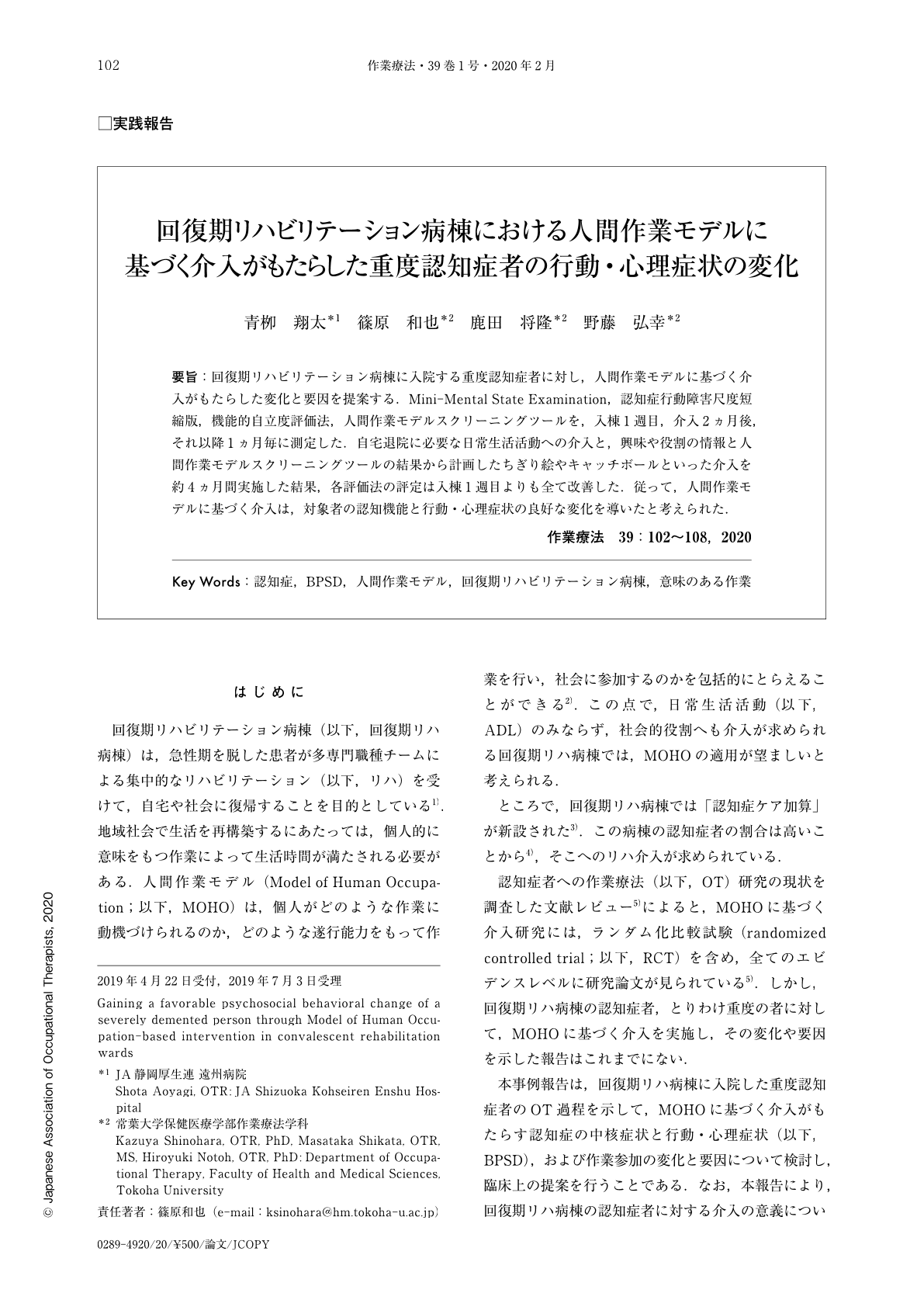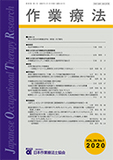Japanese
English
- 販売していません
- Abstract 文献概要
- 1ページ目 Look Inside
- 参考文献 Reference
- サイト内被引用 Cited by
要旨:回復期リハビリテーション病棟に入院する重度認知症者に対し,人間作業モデルに基づく介入がもたらした変化と要因を提案する.Mini-Mental State Examination,認知症行動障害尺度短縮版,機能的自立度評価法,人間作業モデルスクリーニングツールを,入棟1週目,介入2ヵ月後,それ以降1ヵ月毎に測定した.自宅退院に必要な日常生活活動への介入と,興味や役割の情報と人間作業モデルスクリーニングツールの結果から計画したちぎり絵やキャッチボールといった介入を約4ヵ月間実施した結果,各評価法の評定は入棟1週目よりも全て改善した.従って,人間作業モデルに基づく介入は,対象者の認知機能と行動・心理症状の良好な変化を導いたと考えられた.
The purpose of this report was to present the change in psychosocial behavior of a person with severe dementia through utilizing the Model of Human Occupation (MOHO)-based intervention over a period of four months in convalescent rehabilitation wards. The Mini-Mental State Examination (MMSE), Short version of the Dementia Behavior Disturbance Scale (DBD13), Functional Independence Measure (FIM), and Model of Human Occupation Screening Tool (MOHOST) assessments were completed one week after the client moved from the general wards to the convalescent rehabilitation wards. The occupational therapist provided him with MOHO-based intervention involving torn-paper pictures, shaving himself, playing catch, and practicing activities of daily living for four months. The MMSE, DBD13, FIM, and MOHOST data were then collected, and the results showed that the MMSE, FIM, and MOHOST scores increased, and the DBD13 score decreased 4 months after the MOHO-based intervention compared to the initial assessments. Therefore, MOHO-based intervention effected a positive change in behavioral and psychological symptoms of dementia, activities of daily living, and occupational participation for a person with severe dementia.

Copyright © 2020, Japanese Association of Occupational Therapists. All rights reserved.


